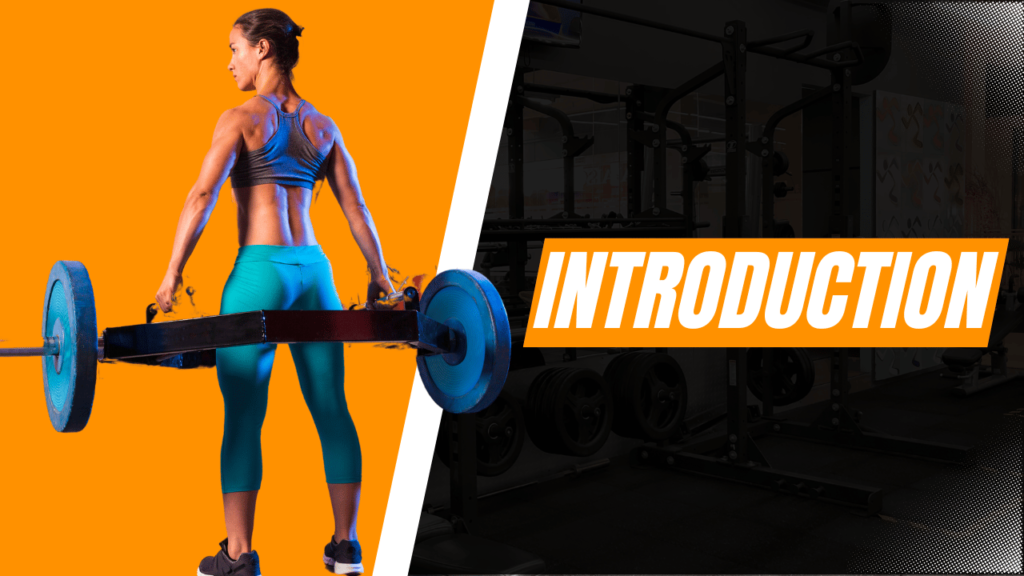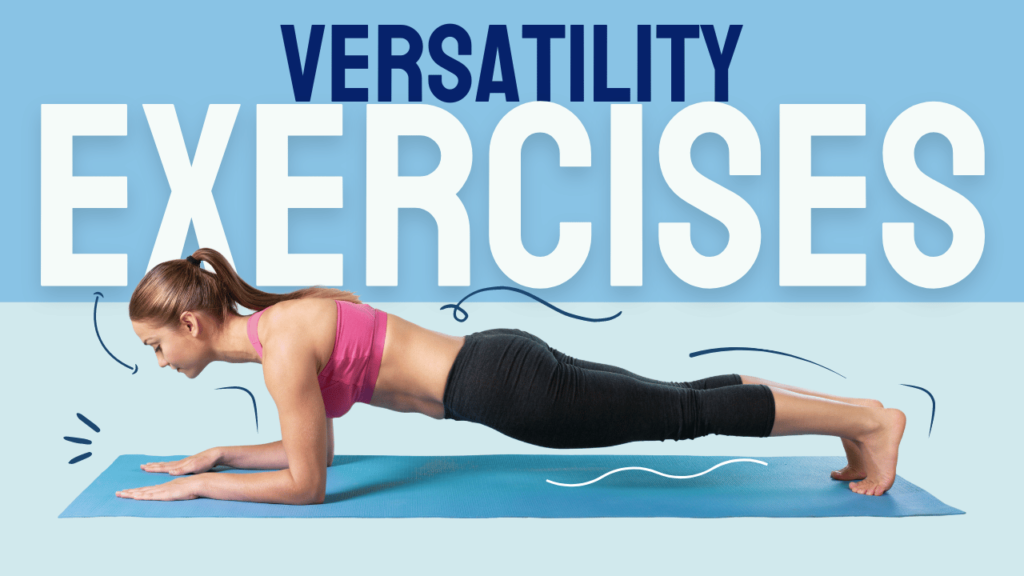Table of Contents
Introduction:

The hex bar, or trap bar, is a staple in modern strength training that offers a fresh twist on traditional lifting exercises. Invented by powerlifter Al Gerard in 1986, the hex bar provides a new way to perform deadlifts and other exercises, but like any tool, it has its strengths and weaknesses. This blog explores the advantages and disadvantages of the hex bar to help you make the most of your workouts.
A Brief History of the Hex Bar:

Before the hex bar, most lifters relied on the straight barbell for their deadlifts. While effective, traditional deadlifts often place significant strain on the lower back, especially when handling heavy weights. The hex bar was designed to address this issue by allowing lifters to step inside the bar, which helps to better align the weight with the body center of gravity. This innovation makes it easier to maintain a more upright posture and reduce lower back stress.
The Benefits of Using a Hex Bar:

1. Reduced Lower Back Strain:

One of the most significant benefits of the hex bar is its ability to minimize strain on the lower back. The traditional deadlift requires a lot of bending at the waist, which can put pressure on the spine. With the hex bar, the design encourages a more upright posture, shifting the load onto the legs and lessening the load on the lower back. Studies have shown that this can help prevent injuries and make lifting more comfortable, particularly for those with back issues.
2. Greater Quad Activation:

The hex bar deadlift is excellent for targeting the quadriceps. Unlike the traditional deadlift, which emphasizes the hamstrings and lower back, the hex bar allows for a more upright position, which increases the involvement of the quads. This can be particularly advantageous for those looking to build leg strength and improve overall power.
3. Improved Lifting Technique:

The design of the hex bar makes it easier for beginners to learn proper deadlift form. The handles are positioned at the sides, which helps keep the shoulders back and maintains a neutral spine. This setup reduces the risk of rounding the back, a common issue in traditional deadlifts, and helps new lifters develop better techniques from the start.
4. Versatility in Exercises:

The hex bar isn’t just for deadlifts. Its design allows for a variety of exercises, including:
- Shoulder Shrugs: With the arms at the sides, you can perform shoulder shrugs with a full range of motion.
- Push-ups: Using a high-handled hex bar for push-ups can relieve wrist strain and allow for deeper movement.
- Split Squats: The open design makes it great for split squats and other leg exercises.
- Farmer Walk: For a farmer walk, a hex bar with parallel grips can be a safer and more effective option.
5. Boosted Confidence:

Many lifters find that they can lift heavier weights with the hex bar compared to the straight barbell. This can lead to increased confidence in their lifting abilities, which often carries over to other exercises, including squats and traditional deadlifts.
The Drawbacks of the Hex Bar:

1. Potential for Increased Spinal Compression:

Although the hex bar reduces lower back strain, using the high handles can increase spinal compression, particularly when lifting heavy weights. This can be a concern for those who are taller or have pre-existing back issues. It’s important to use the hex bar’s handles wisely and ensure proper form to avoid excessive spinal stress.
2. Stability Concerns:

The hex bar can sometimes be less stable than a traditional barbell. This instability might cause issues at the top of the lift, especially when using resistance bands or lifting maximal loads. Ensuring good form and stability is crucial to avoid potential injuries.
3. Limited Carryover to Olympic Lifts:

The hex bar deadlift doesn’t translate as well to Olympic lifts like the clean and snatch. These lifts involve different mechanics and require shifting the bar to a position aligned with the body’s center of mass. The hex bar design, which keeps the load aligned with the body’s center of gravity, may not fully replicate the movement patterns of Olympic lifts.
4. Risk of “Cheating“:

Because the hex bar allows for heavier lifting, some people might be tempted to bounce the bar off the ground. This practice, known as “cheating,” can place harmful stress on the spine and reduce the effectiveness of the lift. It’s best to use a controlled touch-and-go technique rather than bouncing the bar.
5. ACL Stress:

Using the high handles on the hex bar can sometimes place increased stress on the ACL. This can be a concern for athletes recovering from ACL injuries or those prone to knee issues. Monitoring how the hex bar affects your knees and adjusting your use accordingly is important.
6. Plyometric Limitations:

The hex bar deadlift doesn’t utilize the plyometric effect, which is important for developing explosive power. Exercises that involve a rapid transition from eccentric to concentric contractions, like jump squats, are better for building explosiveness. Hex bar jumps can be an alternative, but they still lack the full plyometric benefits.
7. Flexibility Concerns:

Using the hex bar can limit the range of motion for certain exercises, which might reduce muscle-building potential and increase the risk of injuries. Incorporating full-range movements and flexibility exercises into your routine is essential to balance the benefits of the hex bar with overall flexibility and strength.
Making the Most of Your Hex Bar:

To get the most out of your hex bar while avoiding potential downsides, consider the following tips:
- Use Proper Form: Focus on maintaining good technique, whether you’re using the high or low handles.
- Incorporate Variety: Don’t rely solely on the hex bar. Include other exercises and equipment in your routine for a balanced approach.
- Monitor Your Body: Pay attention to how your body responds, especially regarding spinal compression and knee stress.
Conclusion:

The hex bar offers a range of benefits for strength training, including reduced lower back strain, enhanced quad activation, and improved lifting technique. Its versatility makes it a valuable addition to any gym. However, it’s important to be aware of its limitations, such as potential spinal compression and stability issues.
By understanding both the pros and cons of the hex bar, you can make informed decisions about how to incorporate it into your training routine. Whether you’re a seasoned lifter or just starting, the hex bar can help you achieve your fitness goals with the right approach.
Information Disclaimer: Consult with a fitness professional before beginning any new exercise program. The information provided in this blog is for educational purposes only and should not be considered professional advice.
FAQ’s:
What is the purpose of a hex bar?
The hex bar reduces strain on the lower back during deadlifts and allows for a more upright posture, better balance, and greater leg engagement.
Is a hex bar 45 lbs?
Yes, the standard hex bar typically weighs 45 lbs (20.4 kg).
What is the difference between a hex bar and a trap bar?
The hex bar and trap bar are the same, with a hexagonal or diamond shape that allows for a neutral grip.
How much does a hex bar weigh?
Most standard hex bars weigh around 45 lbs (20.4 kg).
How heavy is a hex bar?
The typical hex bar weighs 45 lbs (20.4 kg).
What does a hex bar weigh?
A standard hex bar generally weighs 45 lbs (20.4 kg).
How much does a standard hex bar weigh?
The standard weight for a hex bar is 45 lbs (20.4 kg).
How much does the hex bar weigh?
The standard hex bar weighs around 45 lbs (20.4 kg).
How much does a deadlift hex bar weigh?
Deadlift hex bars usually weigh 45 lbs (20.4 kg).
How much does a Rogue hex bar weigh?
Rogue’s hex bar models typically weigh 55 lbs (25 kg).
How much is a hex bar?
Prices for hex bars range from $100 to $300.
How much weight is a hex bar?
A standard hex bar weighs about 45 lbs (20.4 kg).
How much does a hex deadlift bar weight?
The weight of a hex deadlift bar is typically 45 lbs (20.4 kg).
How much does the hex trap bar weigh?
Hex trap bars usually weigh around 45 lbs (20.4 kg).
How much does a closed hex bar weigh?
A closed hex bar generally weighs 45 lbs (20.4 kg).
How much does a hex bar weight?
The common weight for a hex bar is 45 lbs (20.4 kg).
How heavy are hex bars?
Most hex bars are approximately 45 lbs (20.4 kg).
How much does a hex bar weigh in pounds?
A standard hex bar weighs around 45 lbs (20.4 kg).
What is the weight of a hex bar in kilograms?
A hex bar typically weighs about 20.4 kg.
How much does a hex bar typically weigh?
A typical hex bar weighs 45 lbs (20.4 kg).
Is the hex bar heavier than a regular barbell?
Hex bars and standard barbells generally weigh the same, around 45 lbs (20.4 kg).
How does the weight of a hex bar compare to a straight barbell?
Both hex bars and straight barbells usually weigh around 45 lbs (20.4 kg).
How much weight can a hex bar hold?
Hex bars can typically hold between 600 to 1000 lbs (272 to 454 kg).
What does a hex bar deadlift work?
The hex bar deadlift primarily targets the quads, hamstrings, glutes, and lower back.
Is the hex bar deadlift easier?
Many find the hex bar deadlift easier on the lower back and more comfortable due to the neutral grip.
What is the weight of the hex bar?
Standard hex bars weigh about 45 lbs (20.4 kg).
How much does a hex bar weigh?
A hex bar usually weighs 45 lbs (20.4 kg).
How heavy is the hex bar?
The common weight for a hex bar is 45 lbs (20.4 kg).
What does the hex bar deadlift target?
The hex bar deadlift targets the quads, hamstrings, glutes, and lower back.
Does the hex bar deadlift work back?
Yes, the hex bar deadlift works the lower back but with less strain compared to traditional deadlifts.
How many pounds is a hex bar?
A hex bar typically weighs 45 lbs (20.4 kg).
How much does a closed hex bar weigh?
A closed hex bar generally weighs 45 lbs (20.4 kg).
How much does a hex trap bar weigh?
The hex trap bar usually weighs around 45 lbs (20.4 kg).
Is the hex bar deadlift safer?
The hex bar deadlift is often considered safer for the lower back.
Is a hex bar easier than a barbell?
The hex bar deadlift may be easier on the lower back compared to the traditional barbell deadlift.
What does a hex bar weigh?
A standard hex bar weighs around 45 lbs (20.4 kg).
How much does a hex bar weigh an army?
The standard weight for an army hex bar is usually 45 lbs (20.4 kg).
How much is a hex bar?
The price of a hex bar ranges from $100 to $300.
How much weight can a hex bar hold?
A hex bar can typically hold weights ranging from 600 to 1000 lbs (272 to 454 kg).
What is the purpose of a hex bar?
A hex bar, also known as a trap bar, is designed to enhance strength training by providing a more neutral grip and reducing lower back strain during exercises like deadlifts.
Is a hex 45 lbs?
The standard hex bar typically weighs 45 lbs (20.4 kg), but variations exist, so it’s essential to check the specific barbell’s weight.
What is the difference between a hex bar and a trap bar?
The terms “hex bar” and “trap bar” are often used interchangeably. Both refer to a barbell with a hexagonal shape that allows users to stand inside the bar for exercises like deadlifts.
Is it better to deadlift with a hex bar?
Whether a hex bar is better depends on individual goals and preferences. It can reduce lower back strain and enhance quad activation, but traditional deadlifts might be preferred for specific training objectives.
Can the hex bar be used for exercises other than deadlifts?
Yes, the hex bar can be used for various exercises, including shoulder shrugs, push-ups, split squats, and farmer walks.
How does the hex bar reduce lower back strain?
The hex bar allows for a more upright posture, shifting the load onto the legs and reducing the strain on the lower back compared to traditional deadlifts.
Does using a hex bar improve the lifting technique?
The hex bar’s design helps beginners maintain a neutral spine and proper form, which can improve overall lifting technique.
Can the hex bar help build leg strength?
Yes, the hex bar deadlift emphasizes the quadriceps more than traditional deadlifts, making it beneficial for building leg strength.
Are there any drawbacks to using a hex bar?
Potential drawbacks include increased spinal compression with high handles, stability concerns, and limited carryover to Olympic lifts.
How can I avoid spinal compression while using a hex bar?
Use proper form and choose the appropriate handle height to minimize spinal compression and reduce the risk of injury.
Can the hex bar be used for Olympic lifting exercises?
The hex bar is not ideal for Olympic lifts like the clean and snatch due to its design, which may not replicate the movement patterns of these lifts.
What types of exercises are not suitable for the hex bar?
Plyometric exercises and certain Olympic lifts might not be as effective with a hex bar due to their design and limited range of motion.
How does the hex bar affect confidence in lifting?
Many lifters find they can lift heavier weights with the hex bar, which can boost confidence and carry over to other exercises.
Can the hex bar be used for high-intensity training?
Yes, the hex bar can be incorporated into high-intensity training routines but ensures stability and proper form to avoid injuries.
Is it safe to use a hex bar if I have back issues?
The hex bar can be safer for individuals with back issues due to reduced strain on the lower back, but it’s important to use it with proper form and consult a fitness professional.
How does the hex bar affect confidence in lifting many lifters?
find they can lift heavier weights with the hex bar, which can boost confidence and carry over to other exercises.
Are there any specific brands known for high-quality hex bars?
Several reputable brands offer quality hex bars, including Rogue Fitness, Body-Solid, and Titan Fitness. It’s advisable to choose based on material, weight capacity, and user reviews.
How often should I incorporate the hex bar into my workout routine?
The frequency depends on your training goals and program. It can be used regularly for strength training or incorporated occasionally for variety.
Can using a hex bar replace traditional deadlifts completely?
While the hex bar can be a valuable addition to your routine, it may not fully replace traditional deadlifts if your goal is to target specific muscles or improve specific lifting techniques.










